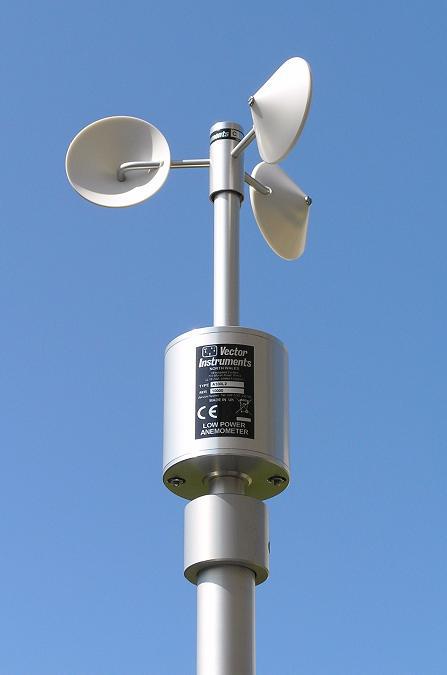Selecting the Right Anemometer: A Comprehensive Acquiring Guide
Selecting the Right Anemometer: A Comprehensive Acquiring Guide
Blog Article
Anemometers Unveiled: Understanding Their Value in Environmental Monitoring and Precaution
The function of anemometers in environmental surveillance and safety and security actions is often taken too lightly, yet their relevance is undeniable. From weather forecasting to aviation safety, anemometers play a crucial function in providing exact data that informs decision-making processes and enhances general safety.
History of Anemometers
The advancement of anemometers can be traced back to the ancient civilizations where primary wind measuring devices were very first made use of. One of the earliest known anemometers was the hemispherical mug anemometer designed by Leon Battista Alberti in the 15th century.
Over the years, advancements in innovation led to the development of even more modern-day anemometers, consisting of ultrasonic anemometers and laser Doppler anemometers, supplying raised accuracy and effectiveness in gauging wind speed and instructions. The background of anemometers showcases an exceptional journey of innovation and progress in the field of weather forecasting.
Kinds Of Anemometers
Throughout the area of meteorology, various kinds of anemometers have actually been established to precisely determine wind rate and direction. One of the most usual kind is the mug anemometer, which includes three or 4 mugs installed on horizontal arms that turn with the wind. As the cups spin, the speed at which they turn is directly proportional to the wind rate. One more extensively used kind is the vane anemometer, which features a tail or fin that aligns itself with the wind direction. This positioning allows the tool to figure out the wind direction. Sonic anemometers make use of ultrasonic signals to gauge wind rate and direction properly. They are typically made use of in study applications as a result of their high accuracy. Hot-wire anemometers operate based upon the principle that the cooling result of wind on a heated wire is symmetrical to the wind speed. These anemometers appropriate for gauging low wind rates with high precision. Each kind of anemometer has its staminas and is selected based on the specific demands of the monitoring task handy.
Applications in Weather Forecasting
Having actually discussed the various kinds of anemometers made use of in weather forecasting for measuring wind speed and direction, it is necessary to explore their useful applications in the field. Anemometers play a vital role in meteorology by offering precise and real-time information on wind conditions (anemometer). Meteorologists use anemometers to keep an eye on wind speed and direction to forecast weather patterns, issue warnings for severe weather events like tornadoes, storms, and hurricanes, and analyze weather for aeronautics safety and security
In weather forecasting, anemometers assist in comprehending regional and local wind patterns, which are essential for forecasting climate adjustments and determining weather patterns. These gadgets are likewise used in study to examine microclimates, city heat islands, and air pollution dispersion. Additionally, anemometers are used in farming to optimize crop management techniques, such as irrigation and pesticide application, based upon wind conditions.
Importance in Aviation Safety And Security
An indispensable element of guaranteeing aviation safety exists in the precise surveillance of wind conditions making use of anemometers. Anemometers play a critical function in aviation by supplying real-time data on wind rate and direction, aiding pilots in making notified decisions during touchdown, liftoff, and trip. Solid and unpredictable winds can significantly influence aircraft operations, making it crucial for air travel authorities to rely on exact wind measurements to guarantee the safety and security of passengers and team.

In the dynamic setting of aviation, where also small modifications in wind rate and instructions can have profound results, anemometers stand as crucial tools for advertising safe and risk-free air travel.
Function in Environmental Study
Anemometers play a critical function in environmental research study by supplying necessary data on wind rate and instructions. By properly gauging wind characteristics, anemometers assist researchers analyze the movement of contaminants in the air, evaluate the effect of industrial exhausts, and forecast the spread of impurities in the setting.


Verdict
In verdict, anemometers have played an essential role in ecological tracking and safety measures. Recognizing the importance of anemometers is important for accurately measuring wind speed and instructions, which is vital for anticipating weather patterns, ensuring secure air travel Clicking Here procedures, and carrying out environmental research studies.
One of the earliest known anemometers was the hemispherical cup anemometer invented by Leon Battista Alberti in the 15th century. Over the years, innovations in innovation led to the growth of even more modern-day anemometers, including ultrasonic anemometers and laser Doppler anemometers, offering raised precision and performance in measuring more information wind rate and instructions. Hot-wire anemometers operate based on the concept that the cooling effect of wind on a warmed wire is proportional to the wind rate. Meteorologists make use of anemometers to keep track of wind rate and direction to forecast climate patterns, issue warnings for severe weather condition events like tornadoes, typhoons, and tornados, and assess atmospheric problems for air travel safety.
Recognizing the significance of anemometers is vital for properly measuring wind speed and direction, which is crucial for forecasting climate patterns, guaranteeing secure aviation operations, and carrying out ecological research studies. (anemometer)
Report this page